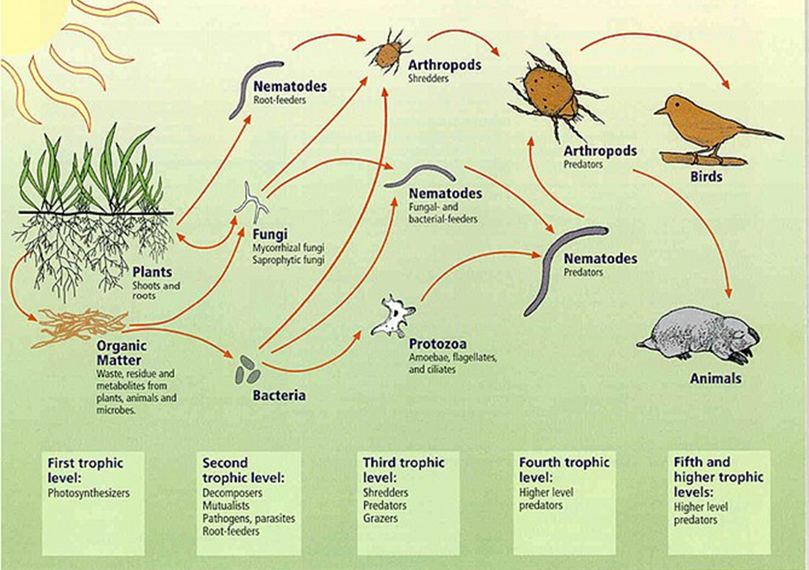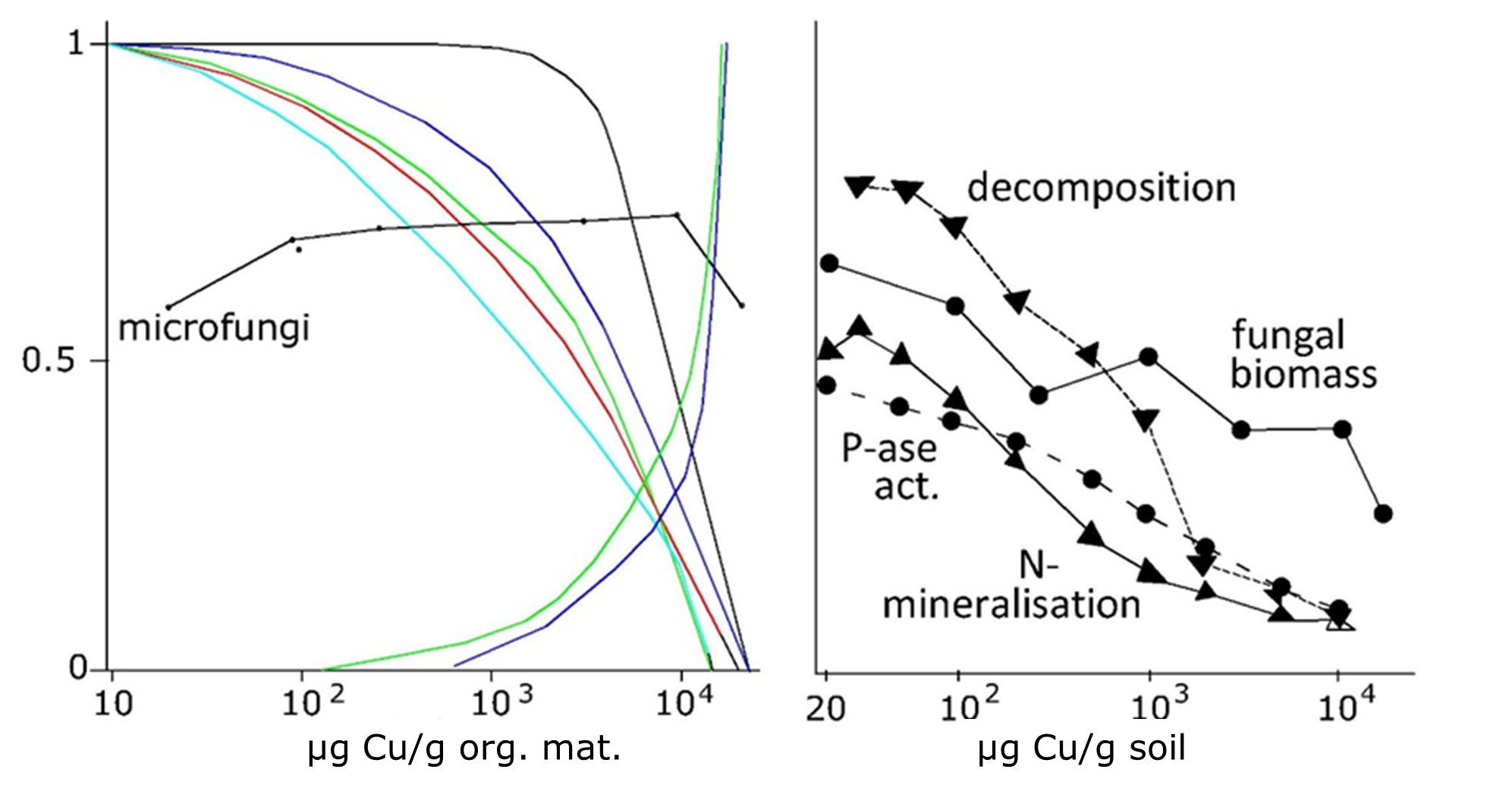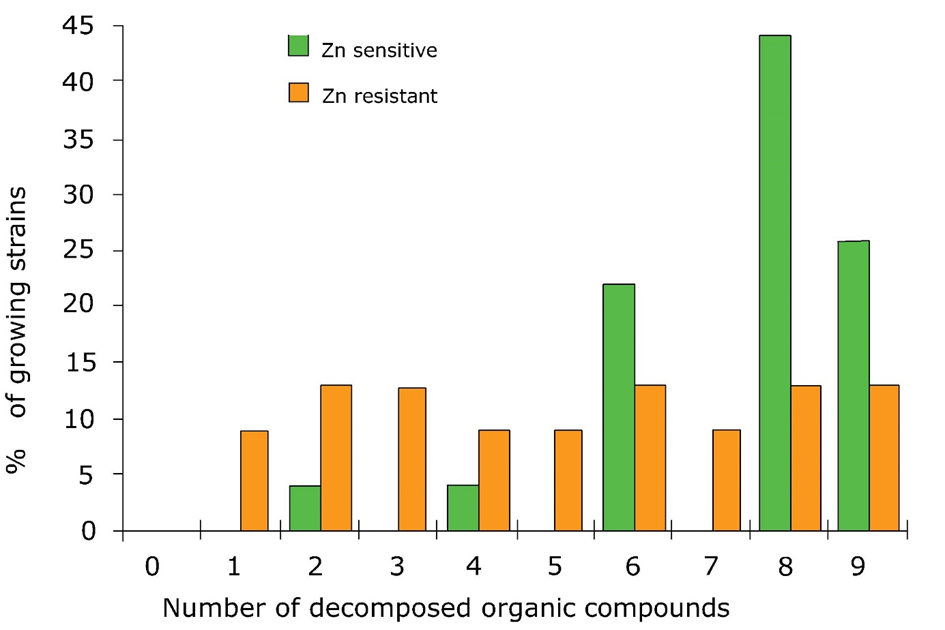5.8: Structure versus function incl. ecosystem services
- Page ID
- 294569
5.8. Structure versus function incl. ecosystem services
Author: Herman Eijsackers
Reviewers: Nico van den Brink, Kees van Gestel, Lorraine Maltby
Learning objectives:
You should be able to
- mention three levels of biodiversity
- describe the difference between structural and functional properties of an ecosystem
- explain why the functioning of an ecosystem generally tends to be less sensitive than its structure
- describe the term Functional Redundancy and explain its meaning for interpreting effects on the structure and functioning of ecosystems
Keywords: structural biodiversity, functional biodiversity, functional redundancy, food web interactions
Biodiversity at three different levels
In ecology, biodiversity describes the richness of natural life at three levels: genetic diversity, species diversity (the most well-known) and landscape diversity. The most commonly used index, the Shannon Wiener index, expresses biodiversity in general terms as the number of species in relation to the number of individuals per species. Precisely, this index stands for the sum of the natural logarithm of the number of individuals per species present:
-∑(pi*ln(pi))
with pi = ni/N in which ni is the number of individuals of species i and N the total number of individuals of all species combined.
In environmental toxicology, most attention is paid to species diversity. Genetic diversity plays a role in the assessment of more or less sensitive or resistant subspecies or local populations of a species, like in various mining areas. Landscape diversity is receiving attention only recently and aims primarily at the total load of e.g. pesticides applied in an agronomic landscape (see Section on Landscape ecotoxicology), although it should more logically focus on the interactions between the various ecosystems in a landscape, for instance a lake surrounded partly by a forest, partly by a grassland.
Structural and functional diversity
In general, the various types of interactions between species do not play a major role in the study of biodiversity neither within ecology nor in environmental toxicology. The diversity in interactions described in the food web or food chain is not expressed in a term like the Shannon-Wiener index. However, in aquatic as well as soil ecological research, extensive, quantitative descriptions have been made of various ecosystems. These model descriptions, like the one for arable soil below, are partly based on the taxonomic background of species groups and partly on their functional role in the food web, expressed as their way of feeding (see for instance the phytophagous nematodes feeding from plants, the fungivorous nematodes eating fungi and the predaceous nematodes eating other nematodes).
The scheme in Figure 1 shows a very general soils food web and the different trophic levels. Much more detailed soil food web descriptions also are available, that do not only link the different trophic groups but also describe the energy flows within the system and through these flows the intensity and thus strength of the interactions that together determine the stability of the system (see e.g. de Ruiter et al., 1998).

This food web shown in Figure 1 illustrates that biodiversity not only has a structural side: the various types of species, but also a functional one: which species are involved in the execution of which process. At the species level this functional aspect has been further elaborated in specific feeding leagues. At the ecosystem level this functional aspect has clearly been recognized in the last decades and resulted in the development of the concept of ecosystem services (see Section on Ecosystem services). However, these do not trace back to the individual species level and as such not to the functional aspect of biodiversity. Another development to be mentioned is that of trait-based approaches, which attempt to group species according to certain traits that are linked not only to exposure and sensitivity but also to their functioning. With that the trait-based approach may enable linking structural and functional biodiversity (see Section on Trait-based approaches).
Functional redundancy
When effects of contaminants on species are compared to effects on processes, the species effects are mostly more distinct than the process effects. In other words: effects on structural diversity will be seen already at lower concentrations, and probably also sooner, than effects on functional diversity. This can be explained by the fact that processes are executed by more than one species. When with increasing chemical exposure levels the most sensitive species disappear, their role is taken over by less sensitive species. This reasoning has been generalized in the concept of "functional redundancy", which postulates that not all species that can perform a specific process are always active, and thus necessary, in a specific situation. Consequently they are superfluous or redundant. When a sensitive species that can perform a similar function disappears, a redundant species may take over, so the function is still covered. It has to be realized, however, that in case this is relevant in situation A, that does not mean it is also relevant for situation B with different environmental conditions and another species composition. Another consequence of functional redundancy is that when functional biodiversity is affected, there is (severe) damage to structural biodiversity: most likely several important species will have gone extinct or are strongly inhibited.
Examples of the relation between structure and functioning
Redundant species are often less efficient in performing a certain function. Tyler (1984) observed in a gradient of Cu-contamination by a copper manufacturing plant in Gusum Sweden that specific enzyme functions as well as a general processes like mineralisation decreased faster than the total fungal biomass. (Figure 2b). The explanation was provided by experimental research by Ruhling et al. (1984) who selected a number of these micro-fungi in the field and tested them for their sensitivity for copper. The various species showed different concentration-effect relationships but all going to zero, except for two species which increased in abundance at the higher concentration so that the total biomass stayed more or less the same (Figure 2A).

Another example of the importance of a combined approach to structural and functional diversity are the different ecological types of earthworms. According to their behaviour and role they are distinguished in the anecics (deep burrowing earthworms moving up and down from deeper soil layers to the soil surface and consuming leaf litter), the endogeics (active in the deeper laying mineral and humus soil layers and consuming fragmented litter material and humus), and the epigeics (active in the upper soil litter layer and consuming leaf litter). Adverse effects of contamination on the anecics will result in accumulation of litter at the soil surface, in reduced litter fragmentation by the epigeics and reduced humus-forming by the endogeics. In various studies it is shown that these earthworms have different sensitivities for different types of pesticides. However, so far the ranking of more or less sensitive species is different for different groups of pesticides. So, there is no general relation between the function of a species e.g. surface active earthworms (epigeics) and their exposure to and sensitivity for pesticides. Nevertheless, pesticide effects on anecics generally lead to reduced litter removal, effects on endogeics result in slower fragmentation, reduced humification etc., and an effect on earthworm communities in general may hamper soil aeration and lead to soil compaction.
Another example of the impact of contaminants on functional diversity is from microbiological research on the impact of heavy metals by Doelman et al. (1994). They isolated fungi, bacteria and actinomycetes from various heavy metal contaminated and clean areas, tested these species for their sensitivity to zinc and cadmium, and divided them accordingly in a sensitive and resistant group. As a next step they measured to what extent both groups were able to degrade and mineralize a series of organic compounds. Figure 3 shows that the sensitive group is much more effective in degrading a variety of organic compounds, whereas the heavy metal resistant microbes are far less effective. This would indicate that although functional redundancy may alleviate some of the effects that contaminants have on ecosystem functioning, the overall performance of the community generally decreases upon contaminant exposure.

The latter example also shows that genetic diversity, expressed as the numbers of sensitive and resistant species, plays a role in the functional stability and sustainability of microbial degradation processes in the soil.
In conclusion, ecosystem services are worth studying in relation to contamination (Faber et al., 2019), but also more specific in relation to functional diversity at the species level. A promising field of research in this framework would include microorganisms in relation to the variety of degradation processes they are involved in.
References
De Ruiter, J.C., Neutel, A-M., Moore, J.C. 1995. Energetics, patterns of interaction strenghts and stability in real ecosystems. Science 269, 1257-60.
Doelman, P., Jansen, E., Michels, M., Van Til, M. (1994). Effects of heavy metals in soil on microbial diversity and activity as shown by the sensitivity-resistance index, an ecologically relevant parameter Biology and Fertility of Soils 17, 177-184.
Faber, J.H., Marshall, S., Van den Brink, P.J., Maltby, L. (2019). Priorities and opportunities in the application of the ecosystem services concept in risk assessment for chemicals in the environment. Science of the Total Environment 651, 1067-1077.
Rühling, Å., Bååth, E., Nordergren, A., Söderström, B. (1984) Fungi in a metal-contaminated soil near the Gusum brass mill, Sweden. Ambio 13, 34-36.
Tyler, G. (1984) The impact of heavy metal pollution on forests: A case study of Gusum, Sweden. Ambio 13, 18-24.
Describe the structural and functional diversity at the species and at the landscape level
What is meant by redundancy?
Does redundancy have an impact of the sensitivity of species (structural diversity) versus processes (functional diversity)?


